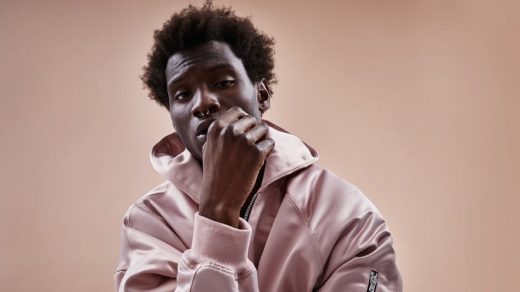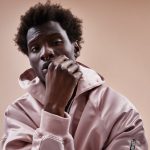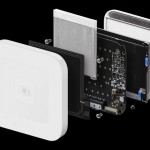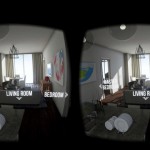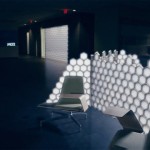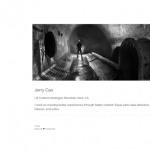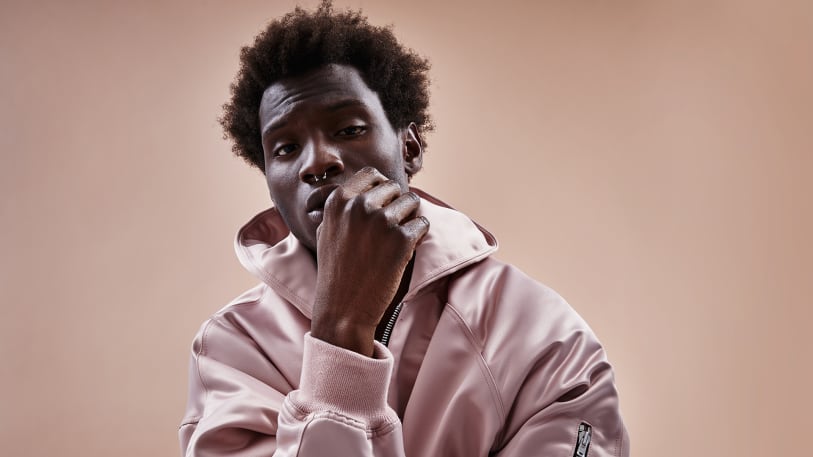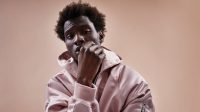A Designer Loved By Kanye Wears His Faith On His (Selvedge Denim) Sleeve
Last fall, the sneakerhead community went wild for a pair of sleek $ 1,095 Desert Storm-inspired high tops. Within days, they were sold out in stores and started showing up on eBay for almost double their retail price. The shoes’ creator, Jerry Lorenzo, had made hundreds of trips to Italy, where they were produced, to work on every aspect of the design, from the rubber soles to the quality of the leather, to the customizable straps and zips.
The success of the sneaker was just the latest accomplishment in Lorenzo’s relatively young career in fashion. Five years ago, the L.A. native was working in the sports industry when he decided he wanted to design clothing. In 2013, he launched Fear of God, a high-end masculine streetwear clothing line that he funded himself. The collection established his esthetic of simple pieces that have been elevated, like track jackets and pants that are lined in silk and finished with titanium zips; extra-long cotton t-shirts that drape just so; and ripped jeans made of Japanese denim with ankle zippers.
Fear of God quickly caught the attention of Kanye West, Rihanna, Kendall Jenner, and Travis Scott. And then, Lorenzo got another major boost when Justin Bieber tapped him to design the merchandise for his 2016 Purpose tour. The goods sold out almost immediately at pop-up shops around the country.
Despite his star-studded customer base, Lorenzo has a vexed relationship with celebrity culture and fame, including his own. He doesn’t want notoriety to distract him from his mission, which is to create thoughtfully designed clothing—and share his faith with the world.
A devout Christian who grew up in a religious home, Lorenzo did not pick the name “Fear of God” to be ironic. It’s plucked directly from the Bible and came to him as he was doing his daily prayer. He wants to use the brand as a platform to share his message of faith and positivity, but knows that fame can be a distraction that could cloud his vision. “I don’t want anybody to put a label on me so that they can now have the expectation of what they want from me,” Lorenzo says. “I never want my position to get bigger than my mission.”

On a recent morning, Lorenzo called me on his way to work to talk about fashion and faith.
Fast Company: You’re very open about your Christian faith. What does it mean for you to run an overtly Christian brand?
Jerry Lorenzo: I started the brand because I felt there was a void in the market. Personally, I felt that there were a lot of things missing in my closet that I wanted at the time. The thought crossed my mind to make something and put it out. But I didn’t have a foundation or a story to tell it on.
I felt as if the last thing the world needed was another cool clothing line. I wanted people to hear what I had to share spiritually. The world needed some positivity. But I grew up in a Christian home, and anytime you would think of a Christian clothing line, you automatically felt like it would be super corny. I never thought I would fuse these two things together.
But the idea for my brand came one day when I was reading a devotion that talked about clouds and darkness around the Kingdom of God. It talked about the layers to Him. For the first time in my mind, God was really cool. He was a dark image in my mind, but not in a demonic way—just dark in terms of the layers and depth to him. The kind of figure that is beyond our understanding. When you’re at peace with God, there’s a fear of God that’s a reverence. But on the flip side, when you don’t know God, there’s a literal fear. So I wanted my brand’s name to play on these two different meanings.
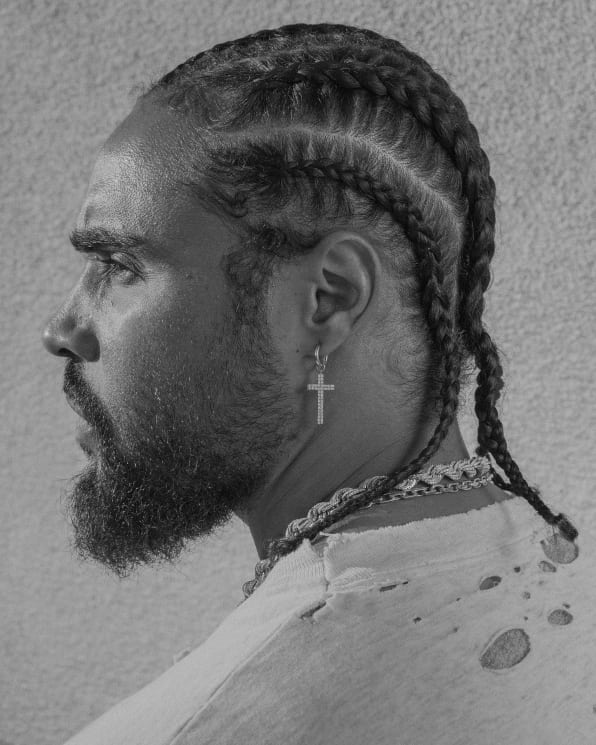
FC: Do you mind that many of your customers don’t get the deeper meaning and just focus on the clothes?
JL: I’m 1,000% okay with consumers just being into the design. I’m just as [resolute] in my spirituality as I am about whatever piece I’m creating that I feel is missing from your closet. That conviction can live on its own.
But from where I sit, I feel that providing solutions to your wardrobe is not enough. If you’re happy with that, then I’m cool, but if you’re looking for something more, than this brand is about something more too, if you want to go there.
FC: Speaking of the clothes, what drives your design?
JL: It started with pieces that I wish I had. Simple stuff: a basic t-shirt made of a drapey fabric but still felt masculine, referencing a basketball jersey. Or a short sleeve hoodie that had raw sleeves and zippers. Pieces that would feel so much better than what I had.
With sneakers, it’s the exact same formula. I used a Desert Storm military hiking boot as the inspiration for a shoe in my third collection. I thought if I could just change the toe on the shoe and make it feel more like a basketball shoe, it would be something I would wear.
Some guys, when they start buying luxury fashion, they start to dress less and less like themselves. I’m trying to say that you don’t have to squeeze into a Hedi Slimane silhouette if that’s not really who you are. You can get luxury and still be yourself and be comfortable in an oversized hoodie and ripped-up jeans. I’m trying to keep that same dude.
That’s why we’re doing a collaboration with [sports hat company] New Era. There’s nothing more masculine than a baseball cap. It’s not very high fashion, but we’re going to make it so.

FC: You didn’t train as a designer. So how did you break into the industry?
JL: I live in L.A., and we’ve got a thriving garment district downtown. A lot of my friends at the time owned streetwear brands like Crooks and Castles, Diamond Supply Co, and The Hundreds. They were providing propositions for what they felt was missing in the market. I thought if they figured it out somehow, I could just go downtown and figure it out. It never seemed like an impossible task. I just figured out how to make a pattern of a short sleeve hoodie with zippers on the side. I figured out how to buy fabric and materials, zippers.
When it came to shoes, I hit up my buddy Jon Buscemi [a luxury sneaker designer]. I asked him, “Do you have time to help me work on a shoe, you know, outside of running this million-dollar company you own?” He said, “I don’t have time, but friend to friend, here’s the developer you need to talk to who would help you see it through.” It was the assist of a lifetime. I met with a developer in Italy, took a sketch I wanted to make. A year and a half later, we had a shoe on the market.
I was very much self-taught. But I was just so driven. I lost a lot of money, but I always thought that what I was making was way more valuable than what I was losing at the time.
FC: You funded the first collection with your savings and use earnings from each line to fund the next. Why have you chosen not to take outside investment?
JL: I don’t have any investors or partners to answer to. There are no goals to meet. Everything is based entirely on our convictions. very collection is a risk. Every dollar that we make goes back into the business. And if we missed the target, we’ve leveraged our whole company. Every collection could be the end of our brand if it’s not successful.
It may freak me out. But believing in myself is all I really have. So I’m just constantly fueling myself and bettering the product by hiring a better production manager and using better fabrics. And I’m always trying to understand why it is that I like the things that I do. Why do I look so much to [sneaker designer] Rick Owens? Oh, it’s because it reminds me of [basketball player] Allen Iverson. As I understand deeper where my references come from, I have the reassurance that there’s a foundation behind my design. It’s not just based on trend, but on life experiences.
FC: Last October, you went to Skid Row in downtown L.A. and gave some of your top-selling shoes to the homeless. What motivated that?
JL: That just happened in the moment. We had between 75 to 100 pairs of these sneakers from a collaboration with Vans that were supposed to be given to celebrities and influencers. I was getting hit up by more people than I had shoes. I didn’t really know where to make the cutoff. Everyone that was so thirsty for the shoe were people that didn’t need them. At the same time, the shoes were selling for $ 100, but getting resold online for between $ 500-$ 700. I felt like the value or the purpose of the shoes was lost.
I thought, “Man, if I’m in a position to give, how dare I give it to someone that doesn’t need it?” I work in downtown L.A. and we pass these homeless people, sleeping in tents and sleeping bags, as we come into work every day. We were in a position to give and were ignoring these people that are around us. I just told my staff, we’re going to pack up all these shoes and clothing and give it to people who need it.
I felt as if it was necessary to record that and share that [on social media]. If you’re someone who takes that as self-promoting, then that’s okay. I thought that more people would be encouraged to go do something good. I know my mission.
FC: How do you feel about becoming a kind of celebrity yourself?
JL: The minute that I begin to celebrate in this position—or put value on the influence that we have—is the moment I lose sight of the bigger mission. I’m human, so negative comments hurt. I’m competitive and I’m trying to do the best that I can to have good sell-throughs at Barney’s. But I never want it to be more important than the mission.
(70)

